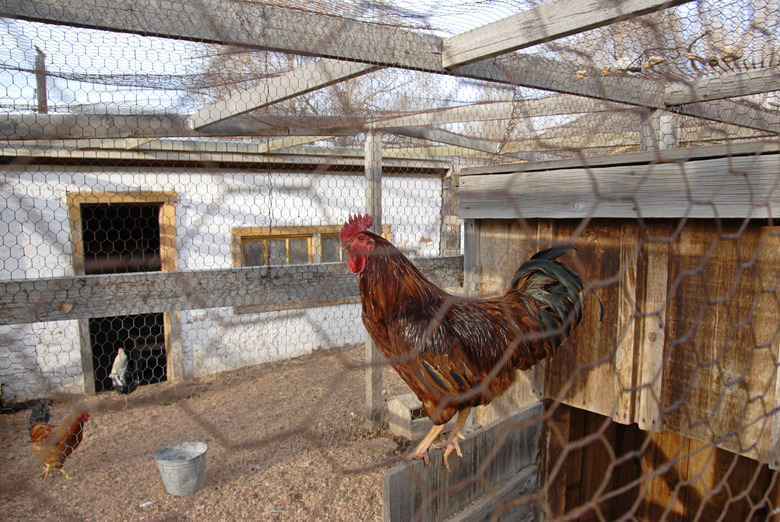How To Install A Chicken Wire Fence
Chicken wire fencing is a flexible building material that has multiple installation options. The fencing requires fence posts or a frame to provide support and hold the fencing in place. Chicken wire typically is used for outdoor livestock containment and protection from predators. Installation requires basic tools and the ability to perform manual labor.
Setting Posts and Building Frames
Set your fence posts or build a frame before installing the wire. Set fence posts no more than 10 feet apart. Longer distances decrease the ability to hold adequate tension. Use wooden fence posts or frames to allow for easy staple installation. Metal T-posts are an option but they offer limited height options and attachment is difficult. Frames are ideal for chickens and livestock in areas with risk of predators. The box style frame allows for wire on all sides to enclose the animals.
Trenching for Security
Dig a trench for the wire along your fence. Dogs and wild animals will dig under a fence to reach livestock. Trench at a depth of 1 foot between fence posts. Pour a layer of concrete in the trench for additional security against digging. Do not pour the concrete until the fence is installed and functional.
Wire Height Standards
Determine the height you desire before installing the wire. Wooden frames may require custom heights to fit your design. Measure and cut with wire cutters to fit your frame. Use a height of 6 feet for fenced areas. Chicken wire is available in 6-foot rolls. You will lose a small amount of height by burying the wire but few chickens will fly over a 5-foot fence. Plan for roughly 4 square feet of area per bird when designing your chicken run.
Stretching and Installation
Proper installation is a two-person job. Chicken wire is too soft for wire stretchers; pulling it by hand is the best method of installation. Align one edge of the wire with your first fence post or the edge of the frame. Hammer poultry staples into the top, center and bottom of the fence. Use a staple gun to secure the area between the poultry staples. Have your partner hand stretch the wire to the next section while you secure the fence in the same manner. Cut the excess with wire cutters when you are finished.
